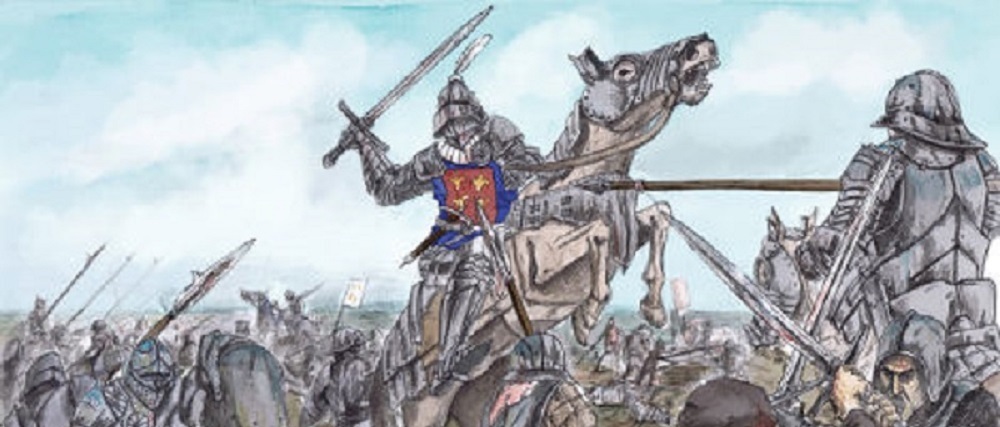Battle of Wakefield
Posted on 10th January 2021
In October 1460 King Henry VI changed the right of succession to the throne of England to Richard, Duke of York and his heirs, making York, Lord Protector, although it was agreed that Henry would retain the throne until his death.
By doing this, Henry had disinherited his own son, Edward and this greatly angered Henrys wife Margaret of Anjou. She refused to accept this decision and would continue to fight for the rights of her son.
Margaret started to build her forces from all across England and her army may have been as many as fifteen thousand men, a large part of which encamped at the market town of Pontefract, while others set out to attack estates owned by York and Salisbury.
Richard, Duke of York left Richard, Earl of Warwick in charge of London, while he, his son Edmund, Earl of Rutland and the Earl of Salisbury marched north on 9 December 1460.
They reached York’s fortress, Sandal Castle near Wakefield on 21 December, only 9 miles (14 km) from the Lancastrian force at Pontefract.
York’s army was about nine thousand strong and heavily outnumbered by the Lancastrian force, however it is believed he did not know he was so heavily outnumbered.
Richard, Duke of York accompanied by his army left the safety of his castle on 30 December 1460, although there is much speculation as to why. This led to the Battle of Wakefield at Sandal Magna, near Wakefield in Yorkshire.
York marched his men forward to engage in battle with Lancastrian forces ahead of them. While fierce fighting took place, Lancastrian forces attacked the Yorkists from the flank and rear, cutting them off from retreat to the castle. The Yorkist forces were outnumbered, surrounded and routed.
The Duke of York died in battle, as did his son Edmund, Earl of Rutland, and Salisbury’s son Sir Thomas Neville. William, Lord Harrington and William Bonville were captured and executed. Richard Neville, Earl of Salisbury initially escaped but was hunted down, captured and beheaded.
The Battle of Wakefield ended in a decisive Lancastrian victory, but this advantage would not last for long.
Battle of Wakefield
Fought - 30 December 1460
Location - Wakefield, West Yorkshire
Participants - House of York and House of Lancaster
Army
York 9,000
Lancaster 12,000 - 18,000
Leaders (York)
Richard, Duke of York
Edmund, Earl of Rutland
Richard Neville, Earl of Salisbury
Leaders (Lancaster)
Henry Beaufort, Duke of Somerset
Henry Percy, Earl of Northumberland
John, Lord Clifford
Andrew Trollope
Victory - House of Lancaster
Casualties
900 - 2,500
Richard, Duke of York (York)
Edmund, Earl of Rutland (York)
Sir Thomas Neville (York)
Richard Neville, Earl of Salisbury (York)
William, Lord Harrington (York)
William Bonville (York)
Tagged as: Junior Middle Ages
Share this post:





